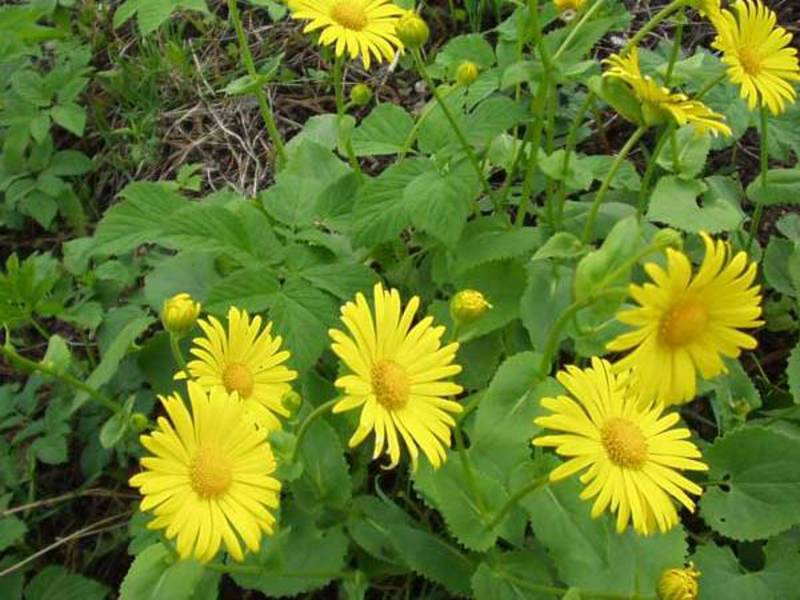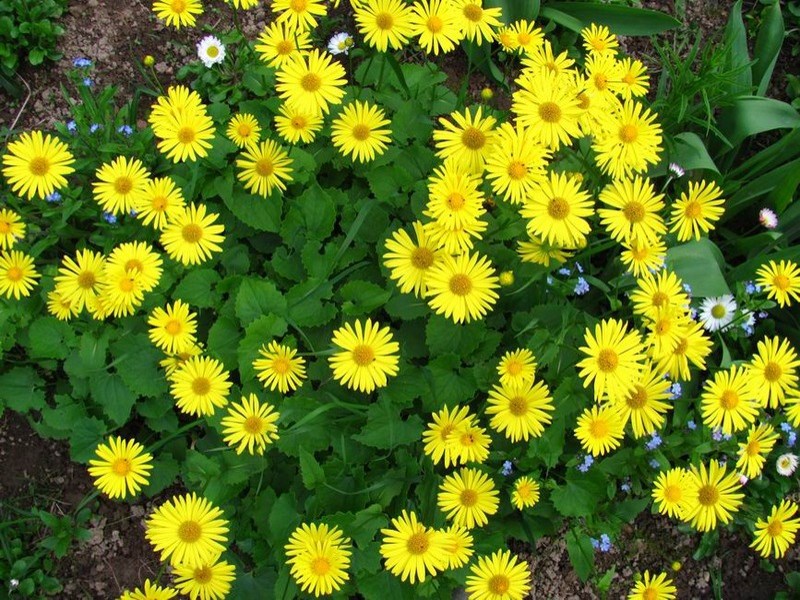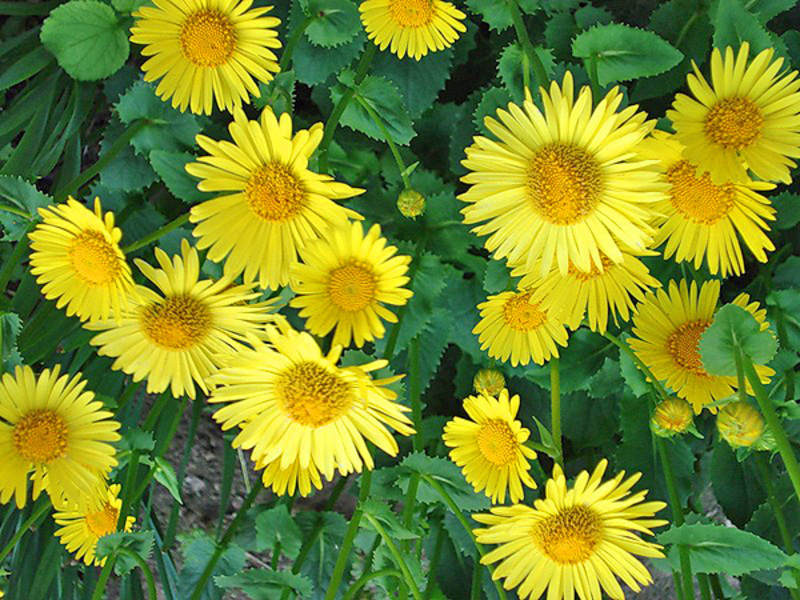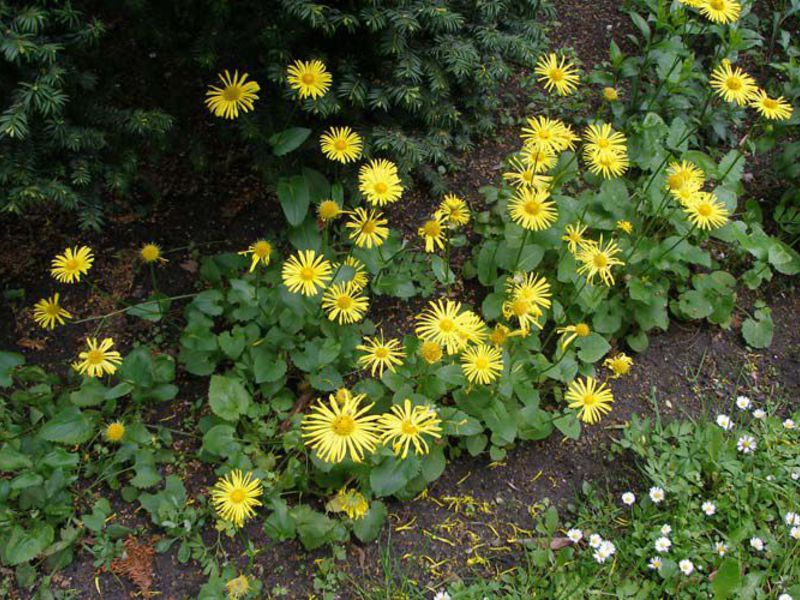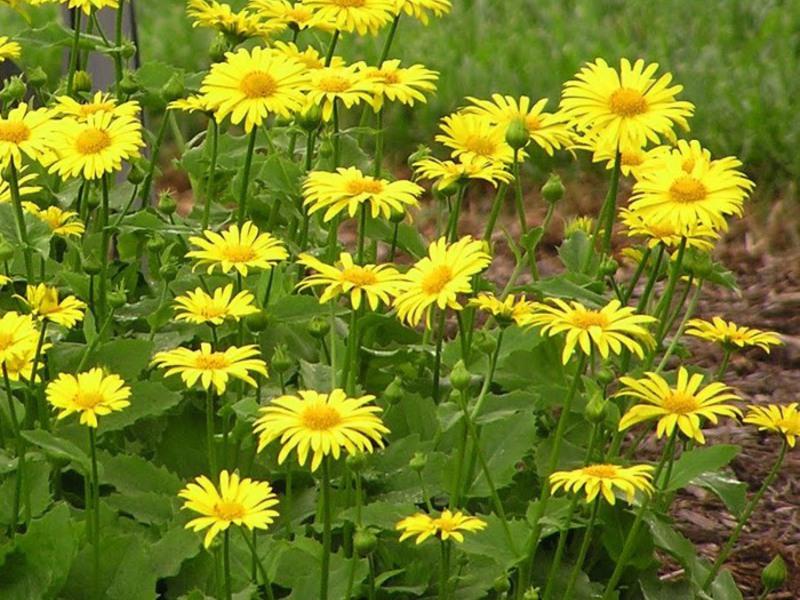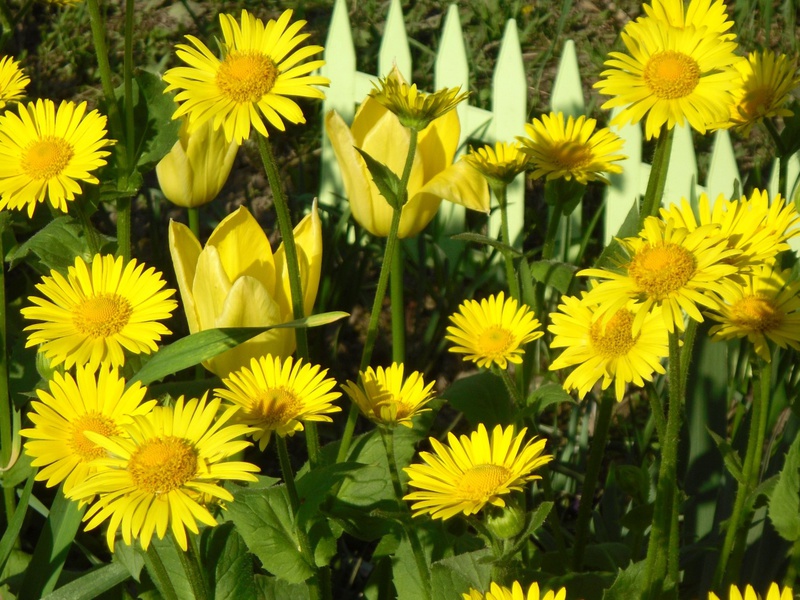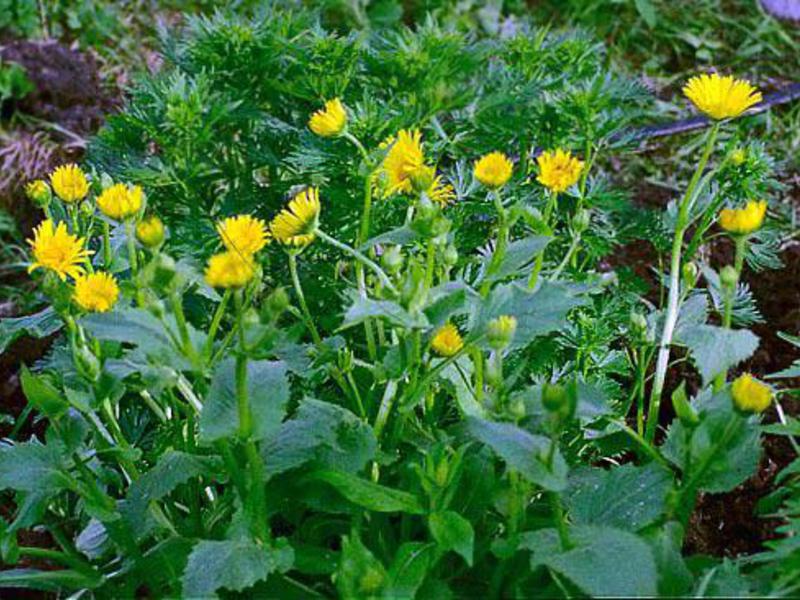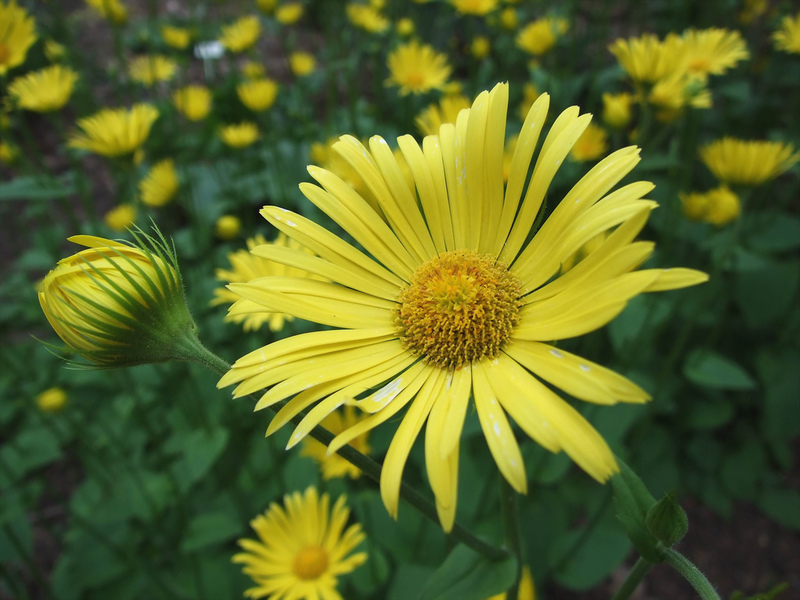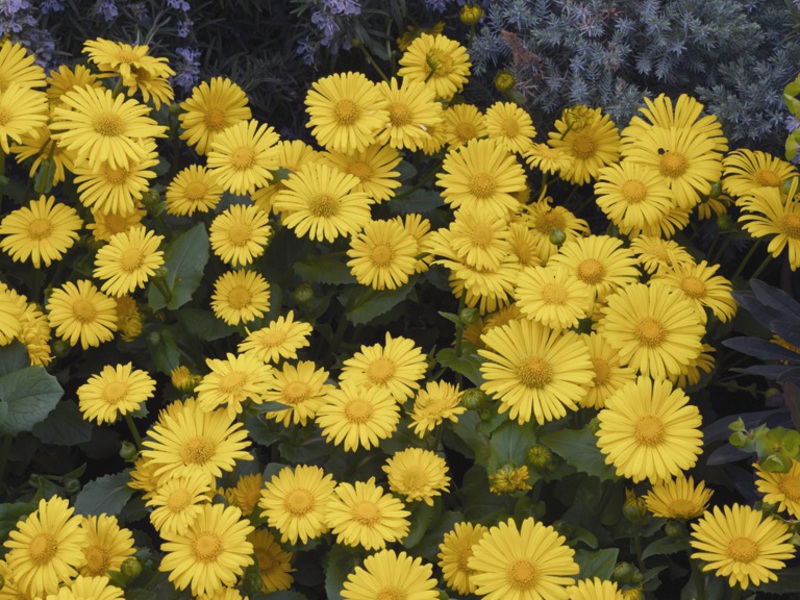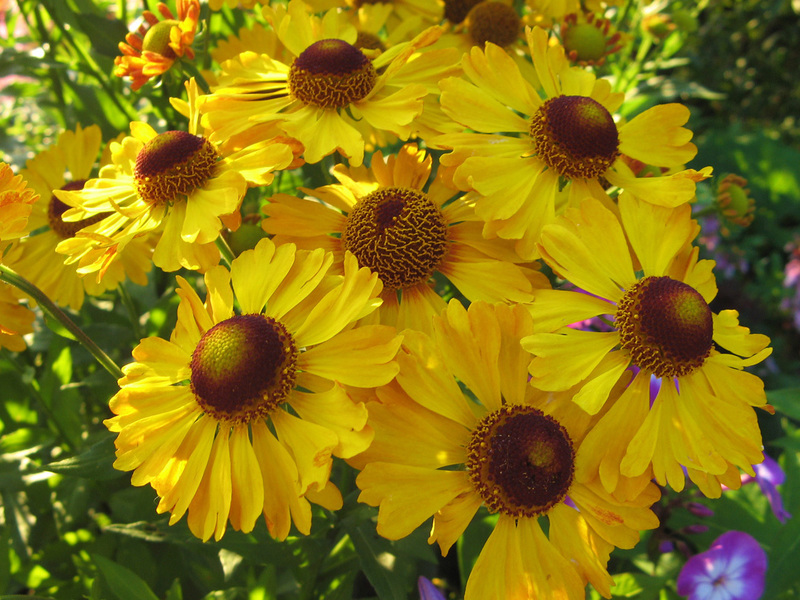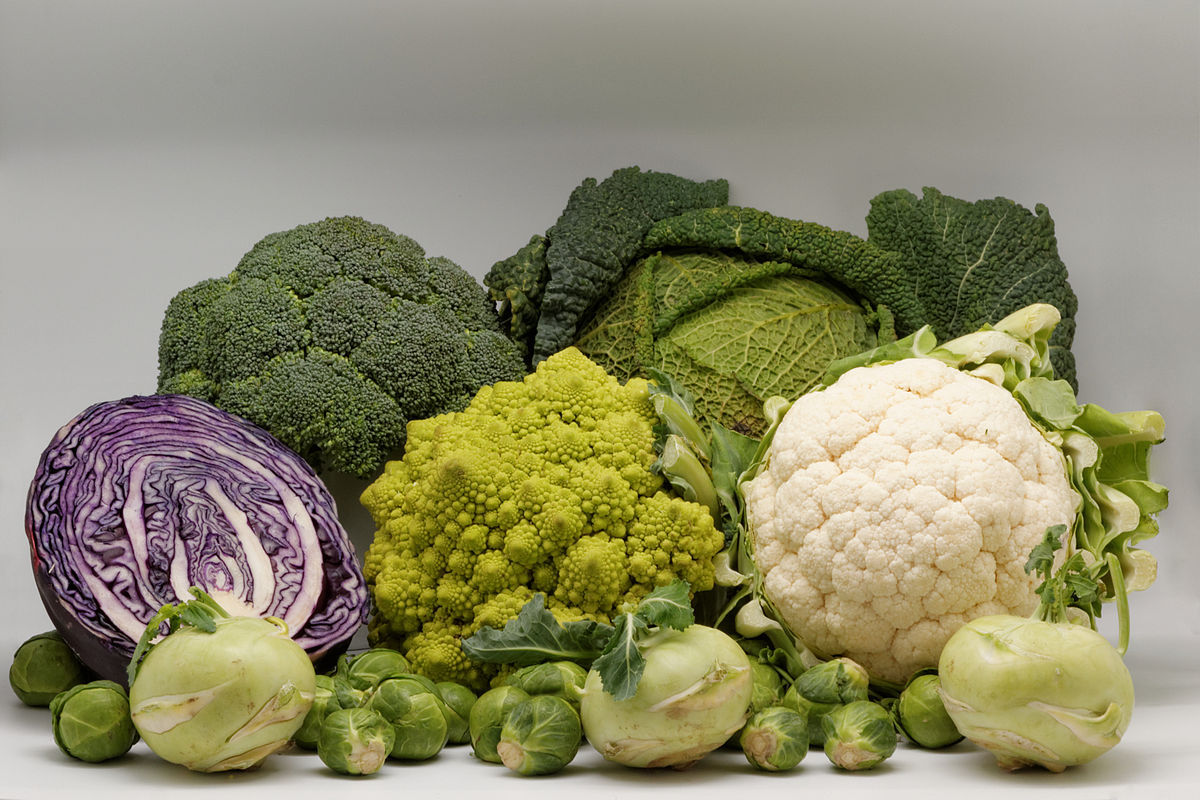Seeing a goat for the first time, for sure, the majority will think that in front of them is nothing but a bouquet of yellow daisies, which each of us is familiar with since childhood. Cultivation of a goat (doronicum) in open ground is not only simple, but also quite a pleasant event. This is largely due to the unpretentiousness of this culture, because even a novice florist can cope with planting and propagating a plant. However, the key to success in this matter is knowledge of the key points for growing doronicum.
Content
Varieties and varieties of doronicum
A photo of a plant will not say anything to ordinary gardeners, because only specialists know how it looks. Doronicum, which in the common people is known as the goat, refers to perennials, representing at the same time a vast family of Aster. There are almost 40 species in the genus of this plant, which are most widely represented in the mountains of Europe and Asia.
The following types of doronicum can be distinguished, which are most often grown as cultivated plants:
- eastern doronicum (D. orientale);
- doronicum plantain (D. plantagineum).
Since doronicum is a perennial, it can be grown without transplanting in one place for a long time. During the growing season, it forms simple stems, on which a small number of branches are formed, the plant itself tolerates adverse weather conditions well. The leaves are presented in the form of a basal rosette, on the stems they grow in the next order. They also lack petioles.
Doronicum bushes can grow in different heights, which is determined by the specific variety. However, usually the spread in height ranges from 0.25 m to 0.7 m... In size, the flowers of the goat are rather small and do not exceed 4-10 cm.
On the edge of the flower basket are ligulate, and in the central part of the flower there are tubular petals. Doronicum flowering period occurs in May-June, regardless of the variety. Pruning wilted buds stimulates the formation of lateral shoots, which are subsequently covered with new yellow daisies. Whichever variety of goat growers chooses, each of them will be able to give him his own charm.
Planting doronicum
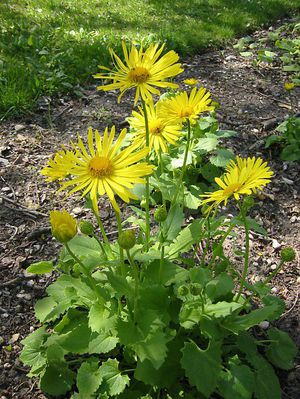 As a classic perennial, the goat grows well in all growing conditions. Therefore, a place can be allocated for it not only in a sunny meadow, but also in those parts of the garden where there is partial shade. This rule does not apply only to the plantain variety Doronicum, since it is possible to observe abundant flowering if it is grow in a sunny area... Based on many years of experience of gardeners, we can say that areas with maximum illumination are most preferable for growing doronicum, since it grows here much longer than usual.
As a classic perennial, the goat grows well in all growing conditions. Therefore, a place can be allocated for it not only in a sunny meadow, but also in those parts of the garden where there is partial shade. This rule does not apply only to the plantain variety Doronicum, since it is possible to observe abundant flowering if it is grow in a sunny area... Based on many years of experience of gardeners, we can say that areas with maximum illumination are most preferable for growing doronicum, since it grows here much longer than usual.
It is not recommended to place the eastern doronicum bushes in close proximity to large trees, since such a neighborhood will not bring benefit.Indeed, with this option of planting, the period of its flowering will be noticeably reduced.
Place to grow
When choosing a place for planting doronicum, it is necessary to take into account that the soil must have a loose structure, be highly fertile and retain a sufficient amount of moisture. One of the features of the doronicum is that its root system located near the surface, therefore, loosening the soil under the bushes may not be beneficial, but harm. In addition, you need to be careful when weeding in the root zone of the doronicum, since there is a danger of damaging the roots of a flowering perennial.
Doronikum will be appreciated first of all by those growers who always do not have enough time to care for ornamental crops. This plant will be able to save the gardener from frequent watering thanks to its powerful root system, which is able to accumulate moisture in sufficient quantities. The goat can only need watering on days when the weather is dry and hot.
Kozulnik is a cold-resistant crop, therefore, when it is grown in the open field, you do not have to take special measures to protect it from temperature extremes.
Plant care
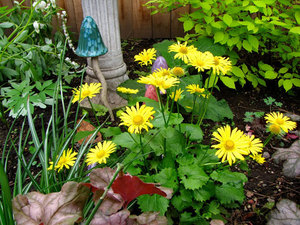 Both experienced and novice florists will be able to appreciate the simplicity of doronicum care. But you need to keep in mind that loosening the soil in the root zone can harm the plantbecause the root system is very close to the surface. Also, for the normal development of this flower culture, it is necessary to take measures to reduce the evaporation of moisture from the soil. A very effective measure is mulching the topsoil in the garden bed where the doronicum bushes are grown. As mulch, you can use wood chips, bark, hay or special materials that retard moisture evaporation.
Both experienced and novice florists will be able to appreciate the simplicity of doronicum care. But you need to keep in mind that loosening the soil in the root zone can harm the plantbecause the root system is very close to the surface. Also, for the normal development of this flower culture, it is necessary to take measures to reduce the evaporation of moisture from the soil. A very effective measure is mulching the topsoil in the garden bed where the doronicum bushes are grown. As mulch, you can use wood chips, bark, hay or special materials that retard moisture evaporation.
With the completion of flowering, the development of the aerial part of the plant stops, and after that it goes into a dormant stage until the end of summer. From this time on, care for the doronicum should be minimal, it is necessary to reduce the frequency of watering. At the end of summer, new shoots form in the plant, so sometimes the doronicum can bloom again. In this case, the young shoots must be well watered and fed.
Rejuvenation
Usually after 4-5 years it is necessary to renew the bushes. This operation is mandatory for any plant, regardless of its condition. Even though there are no signs indicating the need for a transplant, this should not be abandoned, because otherwise, over time, the gardener may notice how Doronicum flowers will begin to shrink.
It should be borne in mind that when updating the goat by the division method, it is recommended to carry out this work at the end of August.
Fertilizing and feeding doronicum
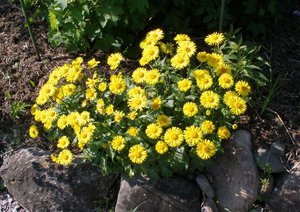 The introduction of dressings for the goat should be combined with loosening the soil, carried out in the spring. At this stage of growing doronicum, it is recommended to use full-fledged complex fertilizers.
The introduction of dressings for the goat should be combined with loosening the soil, carried out in the spring. At this stage of growing doronicum, it is recommended to use full-fledged complex fertilizers.
At the stage of forming new rosettes, it is recommended to use organic fertilizers rich in nitrogen. The presence of this element in their composition will provide the plant with the strength to quickly build up the green mass.
Reproduction of doronicum
To obtain young doronicum bushes, you can use one of the following breeding methods:
- Seed reproduction.
- Division of the bush.
- Reproduction by segments of rhizomes.
By sowing seeds, you can most likely get good planting material, because this plant is prone to self-sowing due to faded baskets that are carried by the wind around the site. Agrotechnics of reproduction of doronicum provides for sowing seeds in spring or autumn. It can be carried out both directly to the prepared bed, and in the greenhouse to obtain seedlings.
It is recommended to breed doronicum by dividing bushes and rhizomes in early autumn, since replacement rosettes are formed at this time.
Diseases and pests
Although the goat is immune to many diseases, but in unfavorable years it can be affected by powdery mildew. They fight this disease with the help of special fungicides.
Dangerous pests for doronicum are leaf and root nematodes, as well as aphids. Good means of struggle with these pests are the following:
- "Atkara";
- Actellik;
- "Fufanon";
- Arrivo.
However, to obtain the desired effect, you must strictly follow the manufacturer's recommendations for use.
If there are signs of nematode damage on the goat, then it will not work to help it. In this case, the infected plants are treated as follows: they are dug up and burned.
Doronicum: combination with other plants
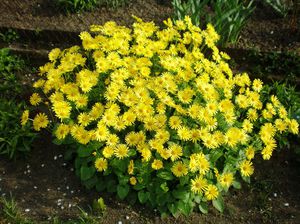 Colorful goat flowers can be used not only as an independent design element of the backyard territory, but also in combination with other perennial plants: veronica, cochid, ostrich, ferns, rogers. Good neighbors for a goat can be perennial daisy and feverfew... Doronicum can also be used as a background plant: it can create a harmonious background for monolithic greenery, as well as shrubs and low-growing trees. It is also able to become a wonderful decoration for compositions decorated in a rustic style.
Colorful goat flowers can be used not only as an independent design element of the backyard territory, but also in combination with other perennial plants: veronica, cochid, ostrich, ferns, rogers. Good neighbors for a goat can be perennial daisy and feverfew... Doronicum can also be used as a background plant: it can create a harmonious background for monolithic greenery, as well as shrubs and low-growing trees. It is also able to become a wonderful decoration for compositions decorated in a rustic style.
Doronicum in landscape design
Despite its simplicity of flowers, this plant could become very popular in landscape design, because for most specialists it is interesting primarily for its undemanding entrance.
Doronicum looks very attractive as part of flower beds, mixborders... Low-growing varieties of this plant can become an excellent decoration for rockeries. You can also use it to design fences and outbuildings. Given that the doronicum blooms at the same time as tulips, irises, daffodils and primroses, these flowers will be considered the most suitable neighbors for it.
Conclusion
Most flower growers, most likely, will not take with interest the doronicum, which they may, when they meet, mistake it for an ordinary chamomile. Although this is not surprising, given that the yellow flowers are strong resemble this traditional plant... However, nevertheless, this decorative culture should be allocated a place on the site, if only because it is very easy to grow it in the open field. Doronicum can feel comfortable not only in a sunny area, but also under the shade of a tree. In terms of care measures, it will not create problems for gardeners, since in addition to irrigation, which is carried out regularly, as well as spring loosening, it will not cause much trouble to the summer resident.
